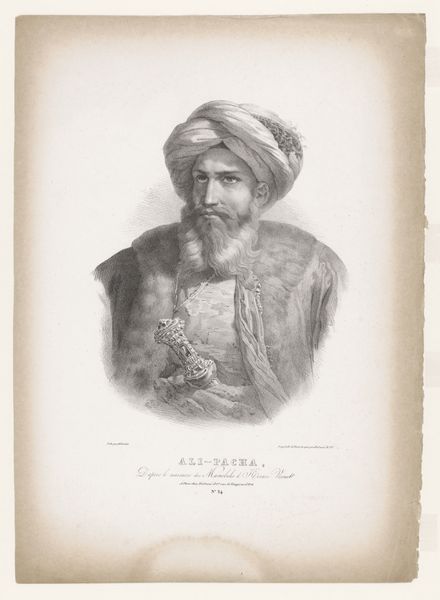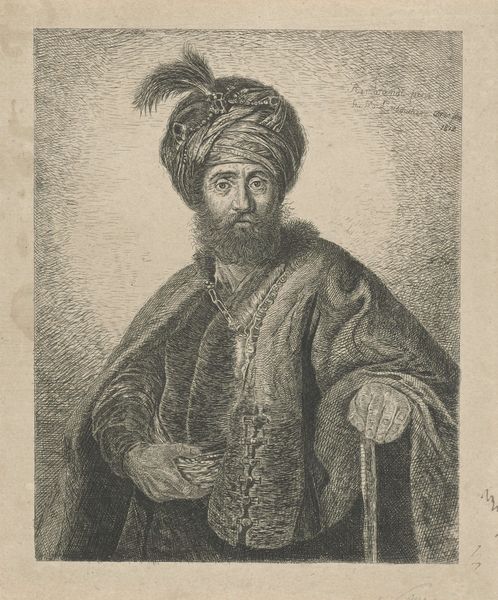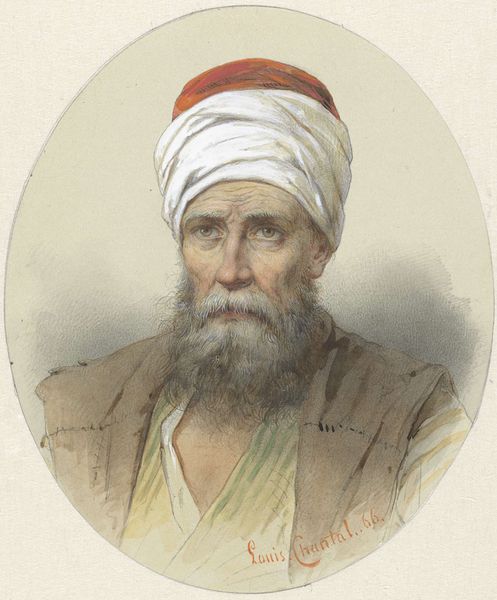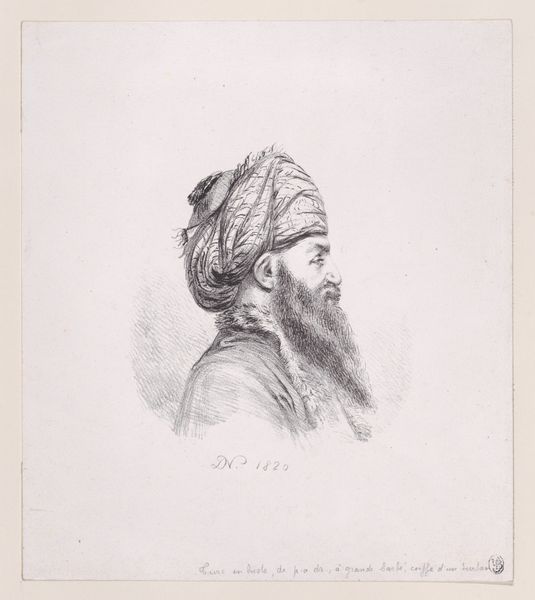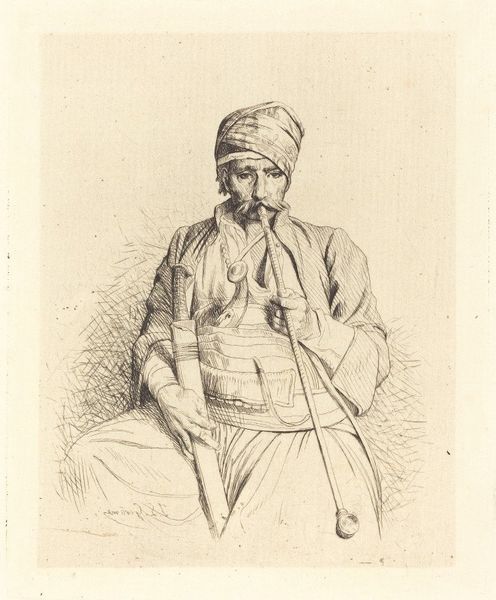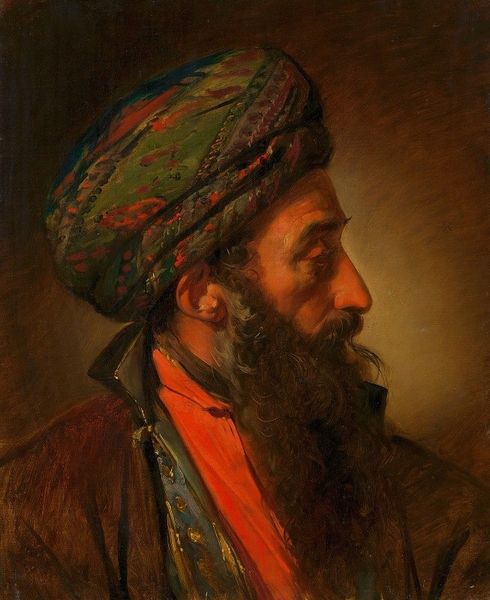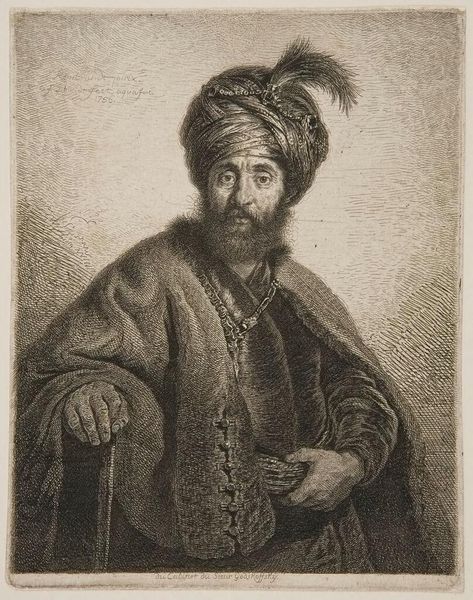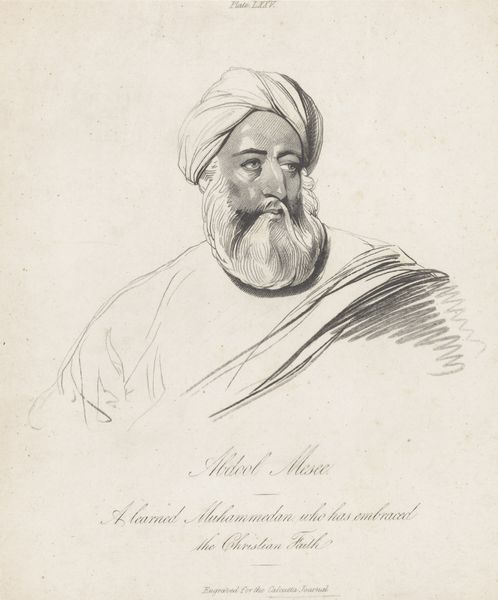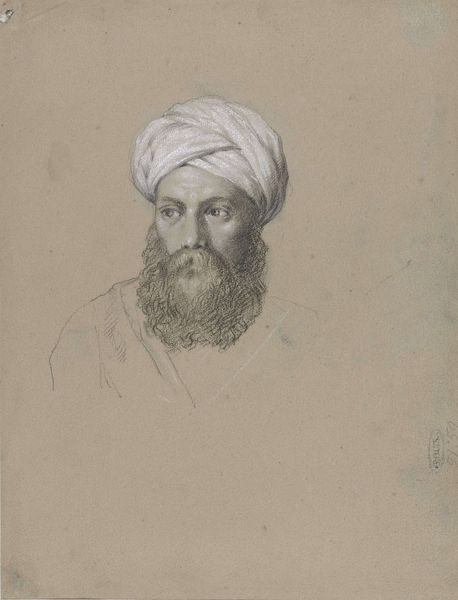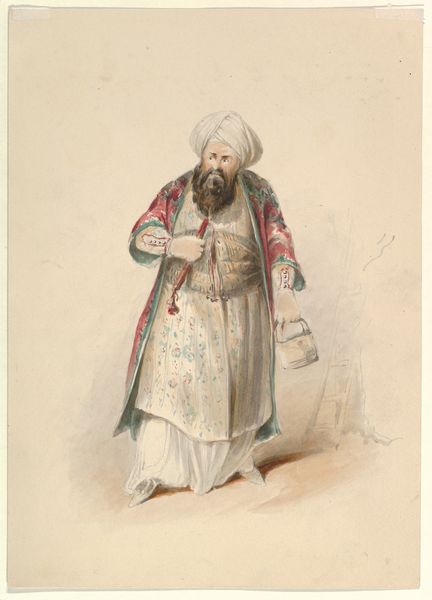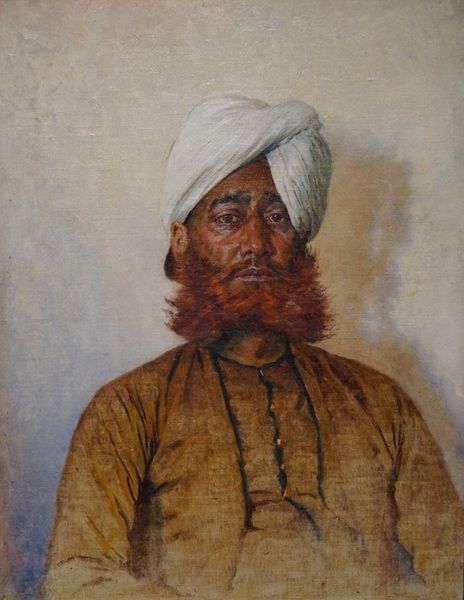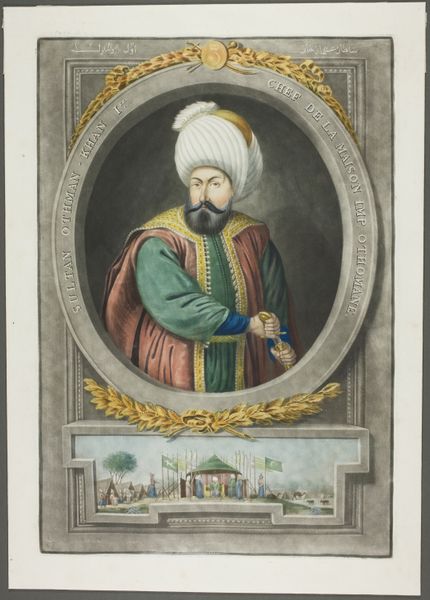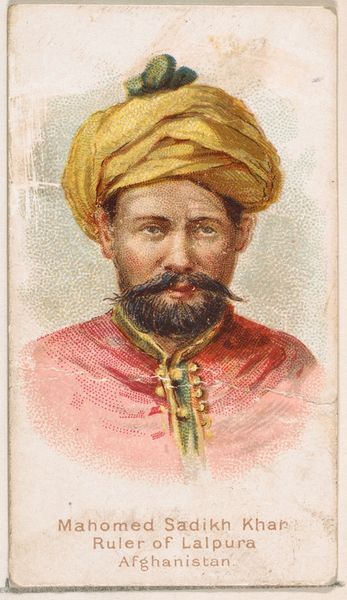
Dimensions: height 256 mm, width 234 mm
Copyright: Rijks Museum: Open Domain
Editor: Here we have Louis Chantal’s 1855 watercolor, ink, and pencil drawing, "Seated Turk with a Dagger in his Belt." It’s strikingly direct, a very personal portrait. How should we interpret a work like this? Curator: This portrait speaks volumes about Orientalism, a 19th-century Western fascination with the "exotic" East, often perpetuating stereotypes and power imbalances. How does Chantal's gaze, as a Western artist, influence his representation of this Turkish man? Editor: I see. So, the focus isn't solely on the individual, but on a larger history of representation. Is the dagger a symbol of aggression or something else entirely? Curator: The dagger is key. It may be intended to emphasize an ‘otherness’ that creates and affirms difference. How does the depiction of weaponry intersect with prevalent European ideas about Turkish identity at the time? This work prompts us to consider the gaze and the exoticization of other cultures through a colonial lens. Editor: That's really insightful! It reframes the portrait from a simple depiction to a commentary on cultural perception. Curator: Exactly! And it pushes us to reflect on how artistic choices reinforce or challenge prevailing ideologies. Who has the power to represent whom, and to what end? Editor: I never considered how political a portrait could be. I appreciate you unpacking all these meanings and historical contexts. Curator: My pleasure. By situating art within these historical and cultural frameworks, we become more critically aware viewers.
Comments
No comments
Be the first to comment and join the conversation on the ultimate creative platform.
